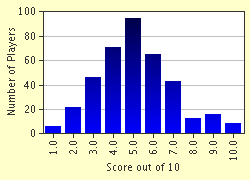Quiz Answer Key and Fun Facts
1. When Caesar 'visited' Britain in 55 BC , he probably only wanted to teach the Celtic Tribes a lesson rather than to occupy the whole island. How long did he stay ?
2. When Caesar 'visited' Britain, he knew that the island was not only populated by 'cousins' of the people he had already defeated in Gaul, but also with some Gallic tribes that had actually emigrated to the 'white island'. Which of these was NOT such a tribe?
3. Caesar was familiar with some of the aspects of the Celtic way of life. One of them was the way in which warriors stain-patterned their faces. What was the plant that was used to produce those dyes?
4. Though Caesar was familiar with the Celtic tribes in Gaul, he was less familiar with some of the fighting-strategies of the Britons, especially the way in which they used horses and chariots. Which of these statements about their use of chariots is the only one that is NOT correct?
5. One of the fighting-techniques of the Romans was the 'testudo' (tortoise-technique). What did it come down to?
6. False or True: Though Caesar had had to leave the Kentish coasts rather in a hurry, he managed to deliver such a 'flattering' report of his expedition that the Roman Senate ordered 20 days of thanksgiving after his return.
7. For his second attempt to land Caesar used ships that were better suited for a landing on a beach, and actually comparable to the flat-bottomed boats used on D-Day 1944. Caesar used more legions this time (five!) and 2,000 cavalry. Though the actual place of landing is not named by Caesar, his description suggests what area it must have been. Which of these places was nearest to it?
8. During his second expedition Caesar met opponents who he had not mentioned in the report of his first trip: the Catuvellauni.They had hidden in Bigbury Wood near Canterbury. Their purpose was to prevent Caesar from crossing the Thames north of which they had their territory. Who was their famous leader?
9. To understand the reports on the Roman explorations of South-East Britain, it helps to have in mind some of the names of important settlements. Which of the following Roman names of Kentish places refers to the present-day town of Dover?
10. Celtic names as used by Caesar in his war reports underwent phonetic and orthographic changes in the course of history. What is e.g. the usual Shakespearean spelling of the name: Cunobelinus?
Source: Author
flem-ish
This quiz was reviewed by FunTrivia editor
gtho4 before going online.
Any errors found in FunTrivia content are routinely corrected through our feedback system.


